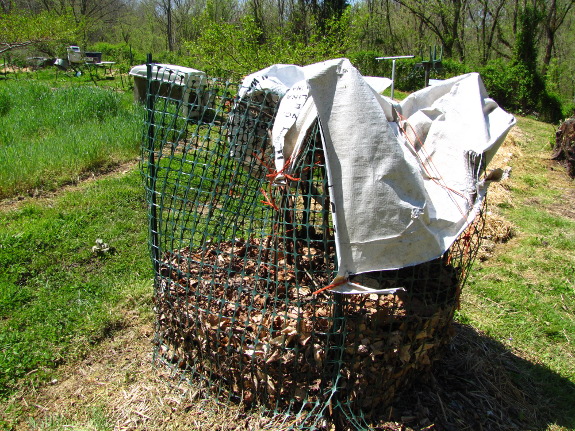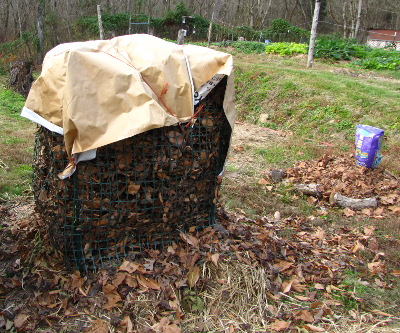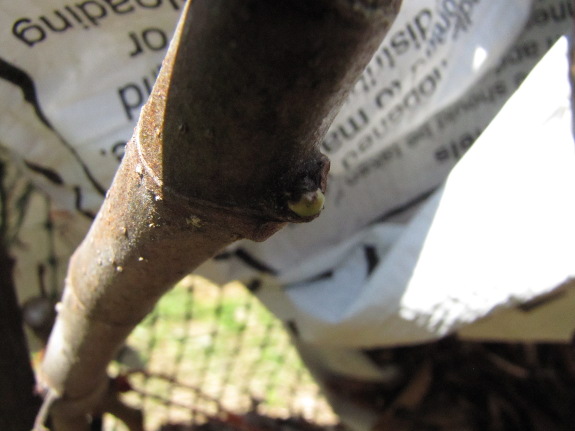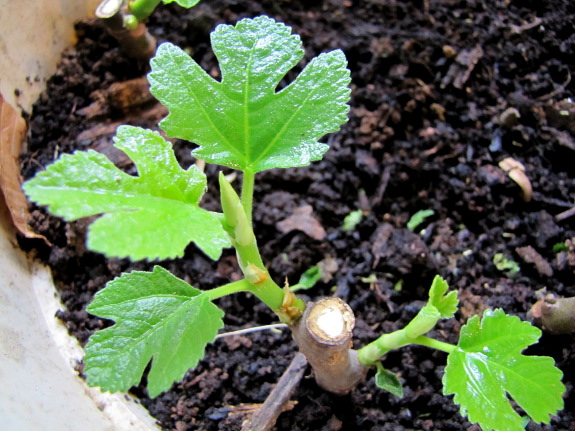
Fig trees get more cold hardy with age

 We fell in love with
homegrown figs last year, so I put a bit of extra effort into
protecting our tree from winter's cold. We live on the edge of
even the hardiest figs' survival zone, and in the past, a lot of our
tree's top growth has died back over the winter despite various forms
of protection. The more top growth that makes it through the
winter, the more figs we get to enjoy, so last fall I
built a cage out of plastic trellis material, stuffed the cage full of
leaves, and topped it off with a tarp to prevent rain from beating the
leaves down.
We fell in love with
homegrown figs last year, so I put a bit of extra effort into
protecting our tree from winter's cold. We live on the edge of
even the hardiest figs' survival zone, and in the past, a lot of our
tree's top growth has died back over the winter despite various forms
of protection. The more top growth that makes it through the
winter, the more figs we get to enjoy, so last fall I
built a cage out of plastic trellis material, stuffed the cage full of
leaves, and topped it off with a tarp to prevent rain from beating the
leaves down.

Unfortunately, over
time, the leaves settled just like the contents of a cereal box.
Since I didn't notice the problem until after some very cold snaps, I
figured the damage was already done and left it alone. I was
expecting to have to cut back dead wood this spring, but as I was
walking by, I noticed buds breaking dormancy in the uncovered wood!

It's not entirely
surprising that the tops of the fig survived the winter
unprotected. We did choose one of the hardiest fig
varieties ---
Chicago Hardy --- and I've also read that figs become more cold hardy
with age. But it's still very heartening to think that our figs
will need less winter protection as they age...because that one fig
tree spawned two babies last fall, Mark picked up a Celeste on a whim over the summer,
and this winter I've been having great results propagating
hardwood cuttings of three more varieties. If all goes as
planned, we may have a dozen or more figs in the ground this time next
year. The only question is, how will I fit them all into our core
homestead? Eating the fruits shouldn't be a problem.
Want more in-depth information? Browse through our books.
Or explore more posts by date or by subject.
About us: Anna Hess and Mark Hamilton spent over a decade living self-sufficiently in the mountains of Virginia before moving north to start over from scratch in the foothills of Ohio. They've experimented with permaculture, no-till gardening, trailersteading, home-based microbusinesses and much more, writing about their adventures in both blogs and books.
Want to be notified when new comments are posted on this page? Click on the RSS button after you add a comment to subscribe to the comment feed, or simply check the box beside "email replies to me" while writing your comment.
- Remove comment
- Remove comment
- Remove comment

- Remove comment
